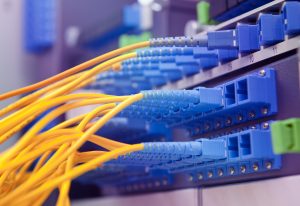
However, as critical as these environmental settings are for your workers, they are even more crucial for the equipment in your data centers.
In your commercial building, maintaining optimal temperature and humidity levels is critical. It ensures the comfort of all your employees and visitors throughout the day. With winter hanging on before spring takes hold, heating and cooling become even more important because no one wants to be freezing inside when it is still 40 degrees out. However, as critical as these environmental settings are for your workers, they are even more crucial for the equipment in your data centers.
Temperature Guidelines
Computer equipment, especially if they are located in dedicated server rooms, generate intense amounts of heat. That’s one of the reasons why the proper cooling setup is necessary. The secret to preventing downtime is to keep a constant supply of hot and cold air cycling in and out of the server room. However, advances in computer changes have also called for new temperature guidelines. As of 2016, these guidelines state that minimum temperature is 64 degrees Fahrenheit while the maximum temperature advisable is 81 degrees. However, the best temperature is actually 80 degrees.
Since the cooling needs are no longer as onerous, businesses can worry less about keeping their computer equipment cooled without risking catastrophic failure. By the same token, you won’t have to see your commercial energy bills skyrocket and instead, you can reassign those funds from your budget to other operating expenses. Even so, data centers must remain on high alert for any potential emergency situations in case the servers overheat.
Humidity Guidelines
As crucial as regulating interior temperatures is, you can’t overlook the significance of humidity. Under the right conditions, humidity can make it feel hotter than it truly is, and one of the downsides of spring and summer’s arrival is the commensurate increase in humidity. You should set the humidity level in your data center to 50%; the minimum level is 20% while the absolute maximum is 80%.
You might not understand how humidity could affect the equipment located in the server room, but humidity is a measurement of the moisture in the air, and moisture can damage or destroy sensitive electronics. Too little humidity can be just as dangerous as too much. You can prevent the possibility of electrostatic discharge by staying within the advised humidity range. One precaution against equipment damage due to aberrant humidity levels is to set warning levels. If humidity reaches certain measurements, then the monitoring system can alert you to the situation. We suggest these thresholds be set at 40% and 60% as preventative measures. However, in some cases, these levels will be bypassed entirely. Unfortunately, this means you need to create failsafe settings – warnings that will activate at 30% humidity and 70%, giving you some time to respond to situations before they escalate and affect the operations of your commercial buildings and data centers.
Crockett Facilities Can Help!
Crockett Facilities Services, Inc. (CFSI) is committed to helping building owners, property managers, engineers, and facility professionals lower their operating expenses through HVAC preventive maintenance. We can develop a cost-effective, customized preventive maintenance plan for your commercial building that will provide you with peace of mind, improved comfort, and energy savings.
To learn more about the importance of HVAC Preventive Maintenance, please contact us at 202.600.2787 or sales@crockett-facilities.com. Our PM contract customers receive priority service with 24/7 emergency service in Maryland, Virginia and Washington, DC.
